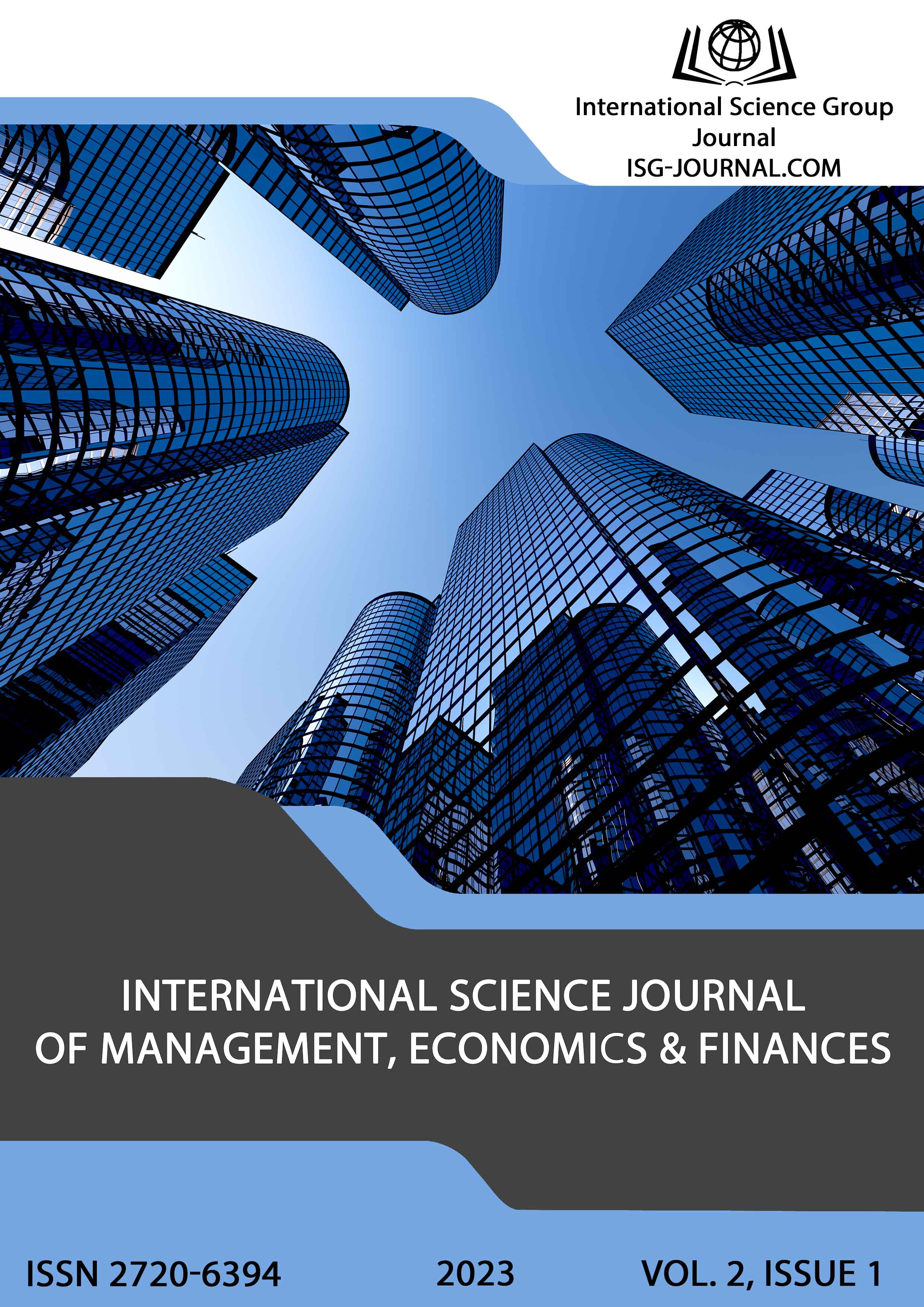Personnel motivation as a factor in increasing the efficiency of the enterprise management system
DOI:
https://doi.org/10.46299/j.isjmef.20230201.08Keywords:
motivation, staff motivation, non-material staff motivation, non-material staff motivation on the example of foreign countriesAbstract
The article is devoted to the study of personnel motivation. Currently, the problems of creating an effective personnel motivation system at the enterprise are becoming particularly relevant in the context of the fact that motivation is one of the key factors in increasing the productivity of employees. The main function of motivation lies in the fact that it has a direct influence on the behavior of the company's employees and forms in them motivating motives for effective and highly productive work. Thoughtful motivation activates the labor activity of employees, increases the efficiency of the entire personnel management system. It is important for managers to know how to increase the efficiency of employees at the enterprise with the help of intangible motivation. The work considers the definition of motivation, the theoretical foundations of personnel motivation, methods and evaluations of personnel motivation are investigated; the significance of personnel motivation as the main lever of personnel management is determined; Special attention is paid to types of motivation: material and non-material motivation, their methods; the experience of foreign countries in the system of non-material motivation and recommendations for managers for the application of non-material motivation of employees at a Ukrainian enterprise.
References
Гриньова В. М., Грузіна І. А. (2007) Проблеми мотивації праці персоналу підприємства: монографія. Харків: ВД «ІНЖЕК», 184
Колот А.М., Цимбалюк С.О. (2012) Мотивація персоналу: підручник. Київ: КНЕУ, 397
Занюк С.С. (2002) Психологія мотивації: навчальний посібник. Київ : Либідь, 304
Співак В.В. (2010) Мотивація як засіб ефективного менеджменту персоналу підприємств. Вісник Хмельницького національного університету : зб. наук. праць., 178–181
Базалійська Н.П., Міщук В.В. (2016) Сутнісні підходи формування системи мотивації трудової поведінки працівників на підприємстві. Глобальні та національні проблеми економіки. монографія. Харків: ВД «ІНЖЕК», 232–236
Нікітін Ю.О., Рукас-Пасічнюк В.Г. (2014) Сучасні моделі та механізми мотивації персоналу українських підприємств. Актуальні проблеми економіки. монографія. Харків: Еспада, 238–246
Дуда С.Т., Кіцак Х.Р. (2010) Мотивація та результативність праці персоналу підприємства: їх сутність та взаємозв’язок. Науковий вісник НЛТУ України: зб. наук.-техн. праць. Львів : РВВ НЛТУ України, 188–193
Клименко М.П., Філатова О.О. (2011) Мотивація управлінського персоналу в реалізації загальної стратегії підприємства. Сталий розвиток економіки: зб. наук. праць., 81–85
Тужилкіна О.В. (2010) Підвищення вагомості нематеріальних чинників мотивації праці у формуванні людського капіталу сучасного підприємства в Україні. Актуальні проблеми економіки, Харків: Еспада, 37–41
Шинкаренко В.Г. (1999) Управління результатами діяльності працівників АТП. Харків: Вид. ХГАДТУ, 143
Кузьмін О.Є. (2003) Основи менеджменту : підручник Київ : Вид-во "Академвидав", 156
Зарубіжний досвід мотивації персоналу. Available at: https://searchinform.ru/kontrol-sotrudnikov/motivatsiya-personala/zarubezhnyj-opyt-motivatsii-personala/
Мотивація праці в різних країнах світу. Available at: http://www.pidpryemec.com/useful/management/%D0%BCotivation-of-labor-in-different-countries-of-the-world/
Світовий досвід мотивації праці та можливість його впровадження в Україні. Available at: http://www.spilnota.net.ua/ua/article/id-2860/
Форми та методи стимулювання продуктивної діяльності в умовах корпоративного управління. Available at: http://www.economy.nayka.com.ua/pdf/1_2021/105.pdf
Downloads
Published
How to Cite
Issue
Section
License
Copyright (c) 2023 Вікторія Ігнатюк, Ганна Туніна

This work is licensed under a Creative Commons Attribution 4.0 International License.






